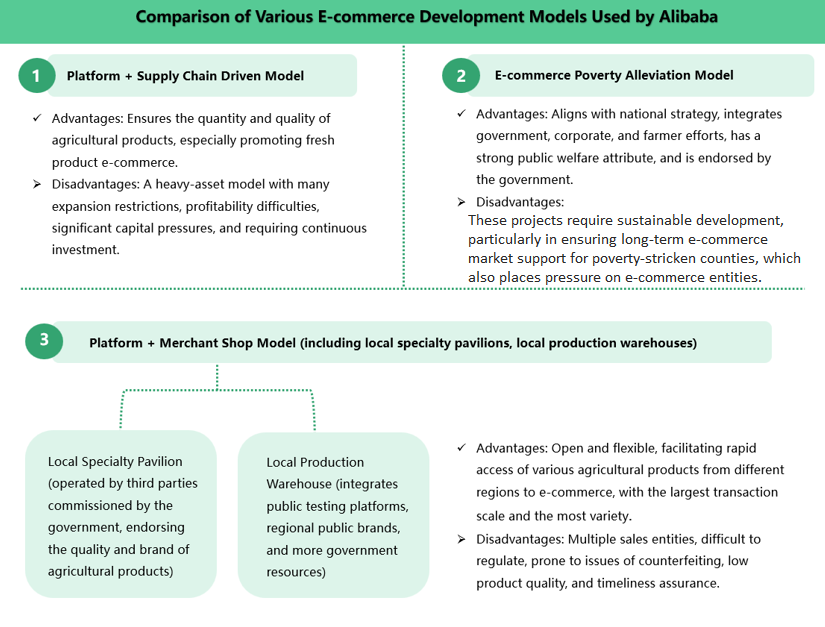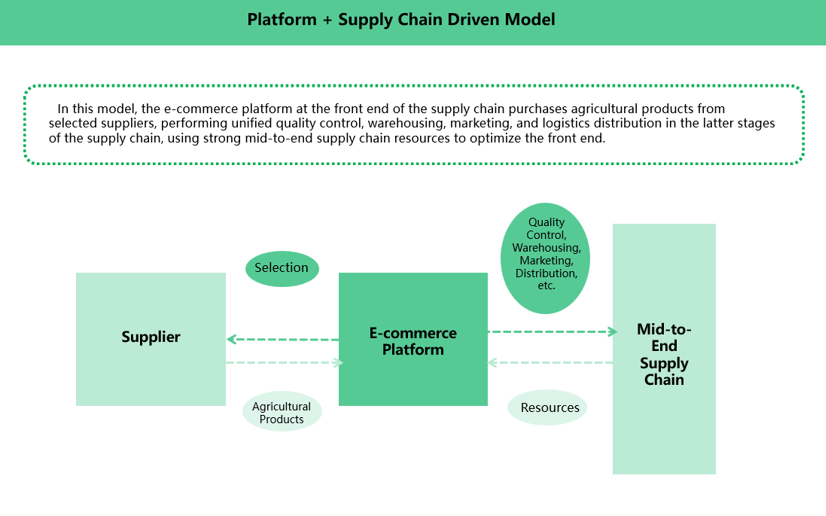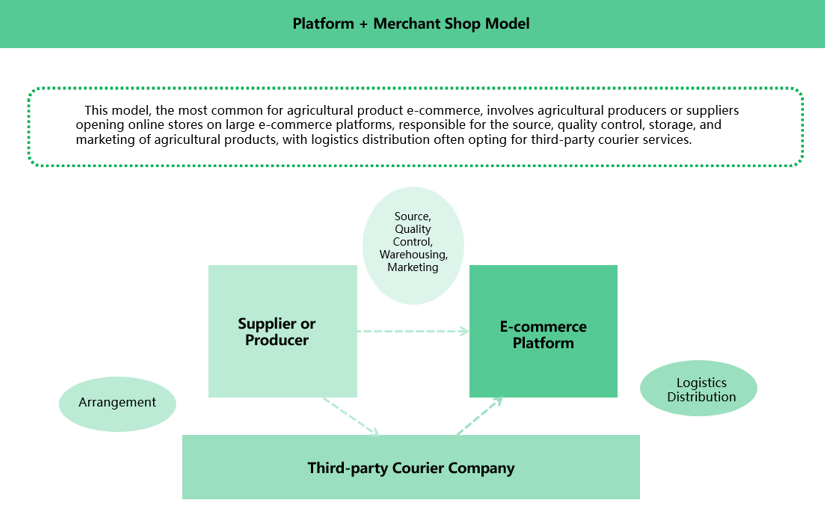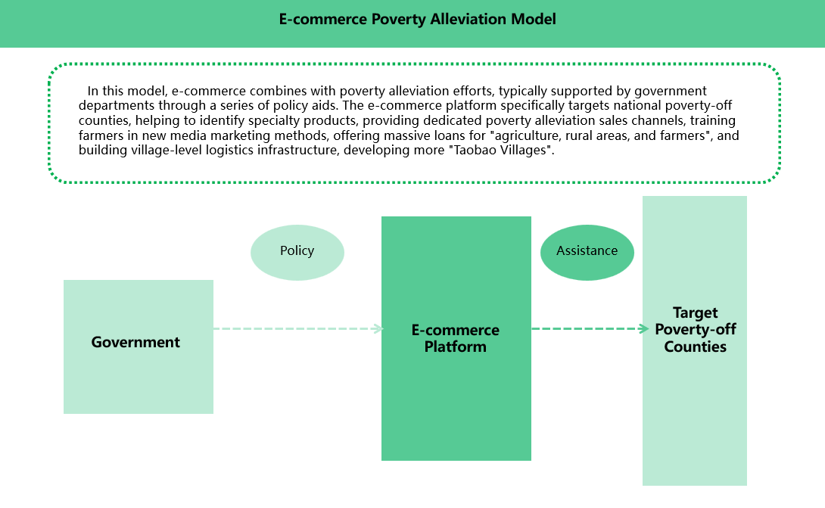I. Brief Introduction
For a long time, e-commerce, with its attributes of limitless time and space, convenient transactions, and traceability, has been considered a powerful means to increase farmers' income and promote the transformation and upgrading of agriculture. However, some rural areas are remote and their agricultural product supply chains are incomplete and difficult to integrate into e-commerce chains.
As China's leading e-commerce company, Alibaba uses different e-commerce development models to extend its platform to rural areas via the Internet, supporting farmers in participating in e-commerce development, enhancing the efficiency of rural commodity circulation, and providing a foundation for farmers to increase income and employment. By June 2020, the number of Taobao Villages in China reached 5,425, an increase of 1,115 from 2019, spread across 28 provinces (cities, districts), with 1,756 Taobao Towns. These Taobao Villages and Towns generated annual sales of over 1 trillion yuan, driving 8.28 million employment opportunities.
II. Approaches
The forms of agricultural product e-commerce adopted by the Alibaba platform can be divided into the following types:

Comparison of Various E-commerce Development Models Used by Alibaba
1)Platform + Supply Chain Driven Model

Platform + Supply Chain Driven Model
Alibaba's Hema Xiansheng brand leverages high-quality supply chains and experience, community-based stores to increase online stickiness and achieve commercial profitability, and extends to upstream and downstream expansions, by directly sourcing agricultural products from production areas, shortening the supply chain, removing unnecessary links, reducing procurement costs, allowing consumers to buy high-value goods more quickly and conveniently, supported by an efficient logistics distribution system. In 2021, Alibaba established the MMC business group, a model of "goods matching people" for small store digital upgrades, creating a system of production driven by sales and improving production with sales, promoting supply-side upgrades and industrial digital transformation, reducing resource waste and loss in production and sales connections.
2)Platform + Merchant Shop Model

Platform + Merchant Shop Model
In November 2020, the five major Alibaba Digital Agriculture Collection and Processing Centers (regional large digital origin warehouses) were all completed and put into operation, and 41 sales location ambient and cold chain warehouses, 6 major sales location live fresh temporary storage warehouses, and 16 sales location processing centers were established in cities such as Shanghai and Wuhan. These, along with five origin warehouses and county-level rural direct management warehouses, form a digital warehousing and distribution matrix and network with nationwide online and offline retail channels, ensuring stable product supply and sales. Prior to the cold wave at the end of 2020, Alibaba's Xi'an origin warehouse and Shandong origin warehouse added 1,000 cold chain vehicles, respectively, urgently purchasing 1,000 tonnes and 600 tonnes of apples to alleviate the crisis faced by fruit farmers.
3)E-commerce Poverty Alleviation Model

E-commerce Poverty Alleviation Model
Alibaba's Revitalising Agriculture poverty alleviation business was launched in August 2017, and in December, 10 billion was invested to establish a poverty alleviation fund, simultaneously making poverty alleviation a major strategic focus for Alibaba. In practical work, Alibaba guides merchants to innovate sales models using live streaming, TikTok, and short videos through the "Brand Beautician Plan". It also launched the "Poverty Alleviation Spring Thunder Plan" series of initiatives, including the establishment of 100 "Village Broadcast Academies" nationwide. These academies will train 100,000 farmer broadcasters; continue building digital agriculture bases, creating 50 specialty agricultural product brands; construct 100 "Blue Knight Villages", providing over 100,000 employment opportunities for impoverished counties; and offer 100,000 new digital job opportunities such as AI annotation specialists and Taobao mini-shops.
III. Results
Cao County has 17 Taobao Towns and 151 Taobao Villages and is the largest asparagus planting base in the country, mainly for export. In the first half of 2020, the asparagus export faced difficulties due to the pandemic. Local companies actively chose to sell asparagus through e-commerce from March to July, reaching a sales volume of 40 million. Internet sales have spurred a batch of professional pepper planting cooperatives in the area. To store and preserve peppers, Cao County has built a large cold storage and fresh logistics chain.
As Alibaba's e-commerce aid for agriculture model exploration progresses, national-level impoverished counties have seen their online sales on the Alibaba platform grow from 25.1 billion in 2015 to 1,102 billion in 2020. In 2020, the Alibaba platform achieved an agricultural product sales volume of 303.7 billion yuan, a more than 50% increase from the previous year.
IV. Lessons Learned
As information technology and smartphones become widespread in rural areas, the internet industry's penetration into the agricultural and rural economy is also deepening. E-commerce for agricultural products, while adapting to urbanisation trends and rising consumer demand, is also changing urban residents' agricultural product purchasing and consumption patterns to some extent, providing new momentum for the transformation of agricultural industry chains and the enhancement of agricultural value chains in rural areas.
Source:
AliResearch
Administration and Management Institute (AMI) of China's Ministry of Agriculture and Rural Affairs (MARA)
Category
E-commerce: Bridging Rural Agricultural Products to Urban Market
Contributor
E-commerce: Bridging Rural Agricultural Products to Urban Market
Country
Case Study

